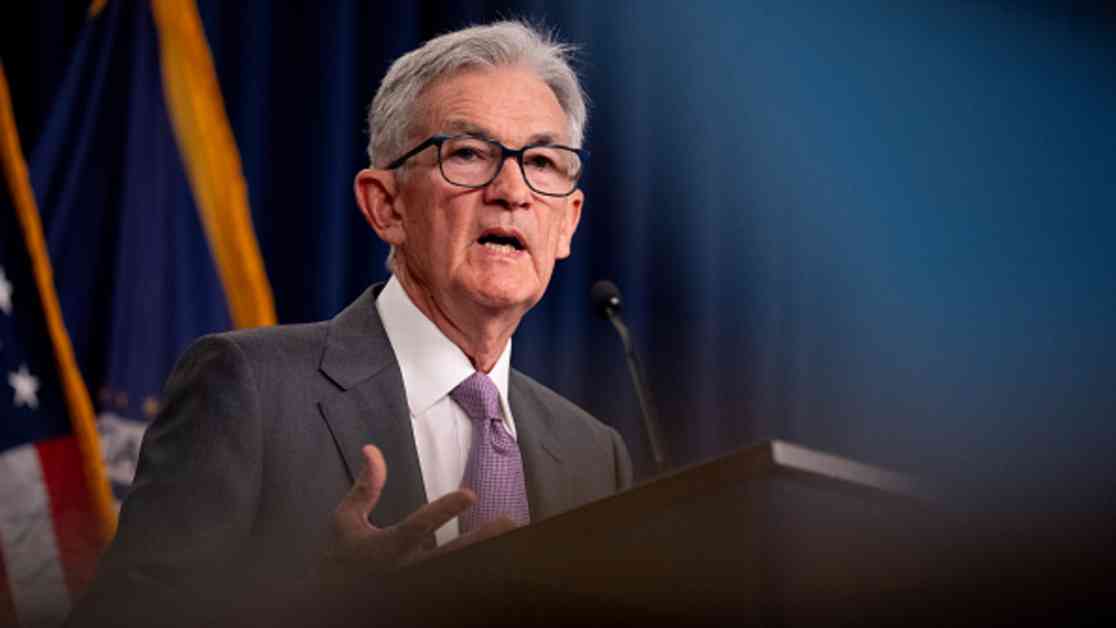Federal Reserve Chairman Jerome Powell hinted at the possibility of cutting interest rates, signaling a potential shift in the central bank’s policy. The last time rates were reduced was over four years ago during the onset of the Covid-19 pandemic. This anticipated rate cut in September has left investors contemplating how to adjust their investment portfolios in preparation for lower interest rates.
Expert financial advisors from CNBC’s Advisor Council suggest that for most well-diversified investors, minimal changes are needed in response to the impending rate cut. Winnie Sun, co-founder and managing director of Sun Group Wealth Partners, likened the situation to getting a haircut – small trims here and there. Long-term investors, especially those with assets in target-date funds within their 401(k) plans, may not need to take any immediate action as professional asset managers handle necessary adjustments on their behalf.
However, for more hands-on investors, there are certain considerations to make, particularly regarding cash and fixed income holdings, as well as the composition of their stock portfolios. Lower interest rates are generally seen as favorable for stocks, as businesses may feel more inclined to expand with reduced borrowing costs. Marguerita Cheng, a CFP and chief executive of Blue Ocean Global Wealth, highlighted the positive impact of lower rates on stock performance.
Federal Reserve Chair Powell’s announcement at the annual retreat in Jackson Hole, Wyoming, emphasized the need for interest-rate policy adjustment in light of decreased inflation and signs of weakness in the labor market. Lowering rates could alleviate pressure on the U.S. economy, with the Fed likely considering a 0.25 to 0.50 percentage-point cut at the upcoming policy meeting in September. Despite the potential benefits for stocks, advisors caution against making hasty portfolio changes in response to Powell’s statements.
As interest rates decline, investors can anticipate lower returns on safer investments like cash, money market funds, and certificates of deposit. Financial advisors suggest securing high guaranteed rates on cash while they are still available, especially for those considering purchasing CDs. Carolyn McClanahan, a CFP and founder of Life Planning Partners, urges investors to be mindful of the interest-rate risk associated with staying in cash and recommends exploring higher-paying fixed-income options like longer-duration bonds for excess cash.
Bond duration plays a crucial role in managing interest rate risk, with short-duration bonds offering lower returns but lower risk. Investors may need to adjust their duration to maintain yields as rates decrease, potentially opting for durations of five to ten years. While advisors generally advise against altering stock-bond allocations, investors may consider diversifying into stocks that typically perform well in a low-interest-rate environment, such as utility and home-improvement companies, real estate investment trusts, preferred stocks, and small-cap stocks.
Navigating a changing interest rate landscape requires careful consideration and strategic planning. While lower rates may present opportunities for certain investments, investors must weigh the implications on their portfolios and make informed decisions that align with their financial goals and risk tolerance. As Powell’s remarks continue to shape market expectations, staying informed and seeking guidance from financial professionals can help investors prepare their portfolios for potential rate cuts and market shifts.














